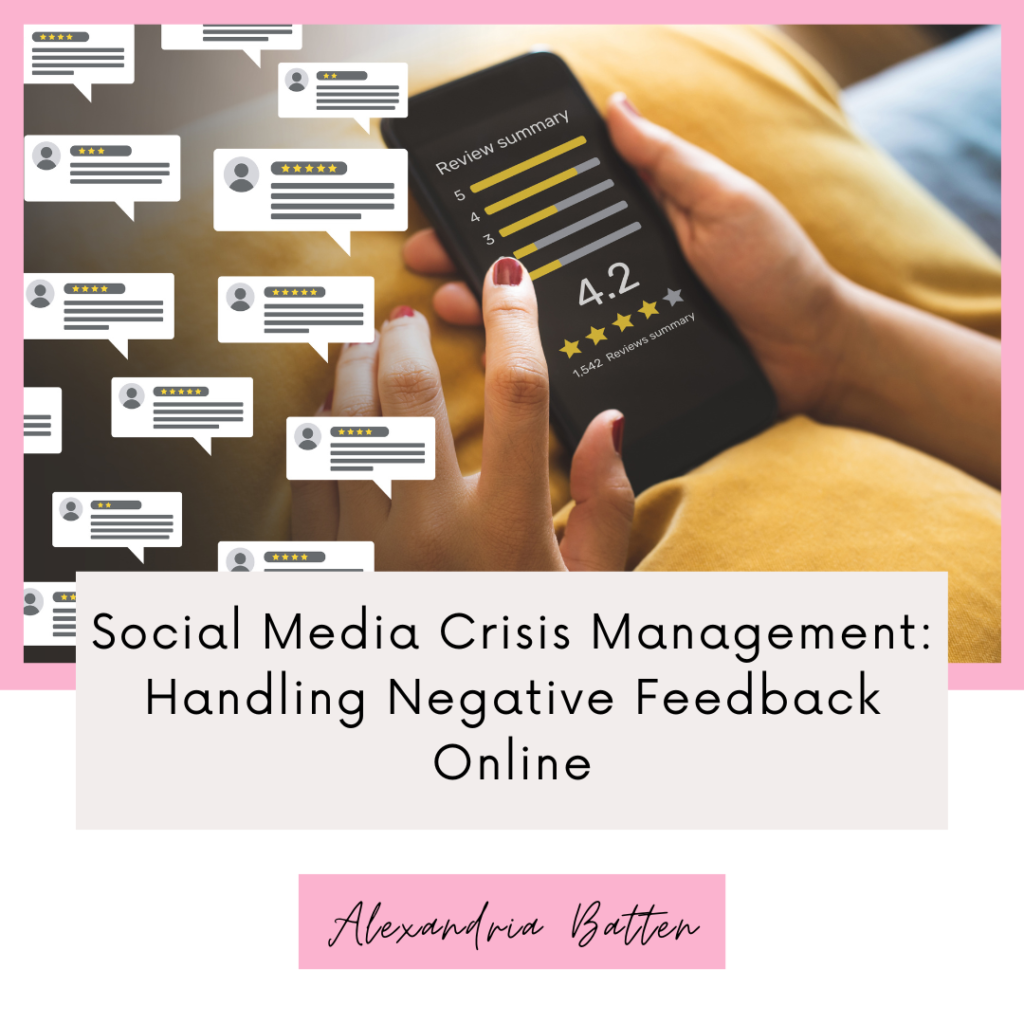Social media platforms have become essential tools for building brand presence, engaging with customers, and showcasing products or services. While these platforms offer great opportunities, they also come with their own set of challenges. One such challenge is handling negative feedback online. In this blog post, we will explore effective strategies for social media crisis management, helping you turn negative feedback into an opportunity for growth.
Understanding the Impact of Negative Feedback
Negative feedback on social media can range from customer complaints and criticism to online disputes and negative reviews. Ignoring or mishandling such feedback can have a detrimental impact on your brand’s reputation. However, when managed effectively, it can also serve as an opportunity to demonstrate your commitment to customer satisfaction and problem resolution.
Monitor Social Media Channels:
The first step in effective crisis management is being vigilant. Regularly monitor your brand’s social media channels, including comments, mentions, and direct messages. Utilize social media listening tools to stay informed about what’s being said about your brand online.
Respond Promptly and Professionally:
When negative feedback arises, respond promptly and professionally. Avoid getting defensive or engaging in arguments. Acknowledge the issue, thank the individual for their feedback, and express your willingness to address the problem. Publicly resolving issues can demonstrate transparency and a commitment to customer satisfaction.
Take the Conversation Offline:
Sometimes, it’s best to take the conversation offline to resolve the issue more privately. Provide contact information or a customer service email where the individual can discuss their concerns further. This not only addresses the problem but also protects your brand’s reputation from prolonged public scrutiny.
Implement a Crisis Response Plan:
Develop a comprehensive crisis response plan that outlines roles and responsibilities within your team. Establish protocols for identifying and escalating social media crises, and ensure that team members are trained to handle negative feedback effectively.
Apologize and Offer Solutions:
A sincere apology can go a long way in diffusing tension. If your brand is at fault, acknowledge the mistake and outline the steps you’ll take to rectify it. Offer solutions or compensations when appropriate, demonstrating your commitment to making things right.
Monitor the Resolution:
After addressing the issue, continue to monitor the situation. Ensure that the problem has been resolved to the customer’s satisfaction. Consider following up with the individual privately to check in and ensure they are happy with the outcome.
Learn and Improve:
Every negative feedback scenario is an opportunity for growth. Analyze the feedback to identify patterns and areas for improvement within your products, services, or processes. Use this information to make positive changes that can prevent similar issues in the future.
Negative feedback on social media is an inevitable aspect of digital marketing. However, by implementing effective social media crisis management strategies, you can turn these situations into opportunities for strengthening your brand’s reputation and improving customer relationships. Remember that how you handle negative feedback speaks volumes about your brand’s commitment to customer satisfaction and can ultimately lead to positive outcomes.
At AB Social & Digital Marketing, we understand the importance of maintaining a positive online presence. Our social media management packages include comprehensive monitoring and response services, ensuring that your brand is always responsive to customer feedback and concerns. Let us handle your social media channels, so you can focus on what you do best – growing your business. Contact us today to learn more about how we can help you manage your online presence effectively.
